Gardening can certainly make you feel like the hero of your own backyard!
And without the need for a sky-high beanstalk or a grumpy giant, growing pole beans can feel as magical as a fairy tale – providing a treasure of a harvest and a mammoth helping of fresh, homegrown flavor.
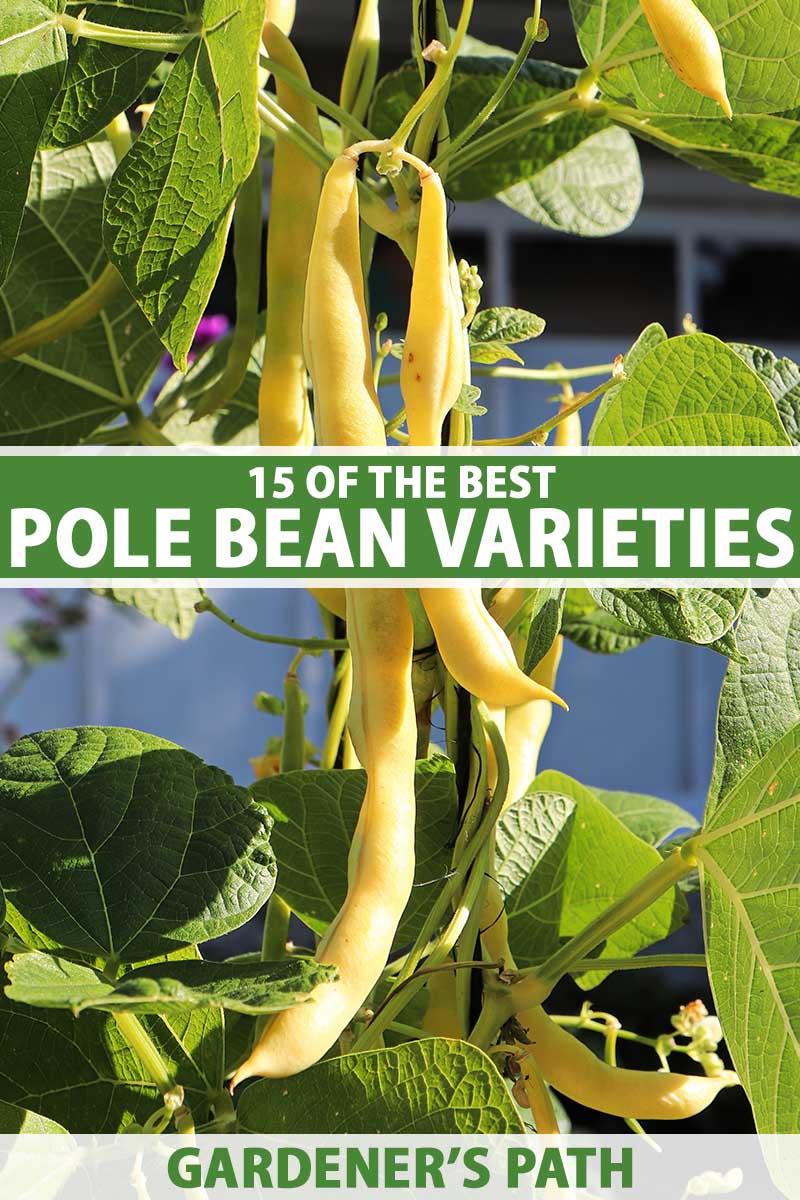
We link to vendors to help you find relevant products. If you buy from one of our links, we may earn a commission.
But to achieve this transformative garden magic, it helps to carefully choose your seeds before you sow, since pole bean cultivars provide pods of different shapes, colors, lengths, flavors, and textures – and require different amounts of time to produce a harvestable crop.
We’re going to consider a collection of 15 fantastic varieties of pole beans.
With this wide selection you’ll be sure to find one or two dazzlers to grace your vegetable garden patch, providing you with a wall of climbing foliage and lovely flowers – as well as a bountiful harvest of colorful, delicious pods to fill your plate and satisfy your belly.
Here’s what we’ll be covering for each of these varieties:
First, I’ll let you know which species you’re dealing with, since we’ll be encountering more than one!
And of primary interest, of course, we’ll also be exploring texture and flavor, as well as seed and pod color, and the size of pods at the ideal harvest time.
We’ll look at best uses for each variety – whether the cultivar is best suited to fresh eating, shelling, or drying – or all of the above!
I’ll also let you know how tall to expect trellised vines to get, and whether each type exhibits any notable tolerance for diseases or conditions like drought, heat, or cool weather.
In addition to these features, I’ll let you know how many days from sowing you should count on to bring each cultivar to harvest, as well as providing some tips on where to source each of these selections.
Want to take a peek at our cultivar list?
Before we get started, let me clarify what types of crops you’re going to discover in this article.
Among this list, you’ll encounter many varieties of green beans, but also some that have different pod colors – yellow, purple, or mottled.

All but one of the fabulous varieties in our roundup can be eaten fresh as snap beans, though some of them are excellent for shelling and drying as well.
And while most of the selections on this list are varieties of the common bean, Phaseolus vulgaris – the one you are likely most familiar with – I have gathered a few cultivars into the fold from different species such as limas, yard longs, and cowpeas that can also be used in vertical gardening.
I’ve decided to take this somewhat broader approach in this article because there are a lot of different types of edible beans that can be grown in the vegetable garden, many of which are climbers, and I don’t want you to limit your options!
Finally, if you’re new to growing these sky-bound legumes and could use some pointers, be sure to review our complete guide to planting and growing pole beans.
1. Big Red Ripper
Our first selection is a colorful variety that is jam-packed with goodness.
Falling into the same category as black-eyed peas, ‘Big Red Ripper’ is a type of cowpea or southern pea (Vigna unguiculata) – and yes, though generally referred to as “peas,” these cowpeas are a type of pole bean.
As noted in the must-have reference book, “Plant Partners” by Jessica Walliser, cowpeas are more than just great to eat, they also make excellent companion plants by improving soil quality – making them an excellent choice for organic gardeners.
This cowpea cultivar, ‘Big Red Ripper,’ is an open-pollinated heirloom from the Southeastern US that dates back to the 1850s.
Making the harvest a breeze, this high-yielding variety has reddish-green pods that are held aloft on their vines.
The tasty pods of ‘Big Red Ripper’ are picked at a whopping 10 inches long and are delicious fresh.
These pods may contain as many as 18 seeds, which are tan to reddish-brown with black eyes when mature. These can be enjoyed when shelled fresh (also known as “shellies”) or they can be allowed to fully mature and dry for storage.
‘Big Red Ripper’ will take off once the mercury climbs and this cultivar is resistant to heat and drought, producing vigorous sprawling vines and lovely blue flowers.
This colorful pole cowpea cultivar matures in 70 to 80 days.
Let these big reds rip – you can find ‘Big Red Ripper’ cowpeas in packs of 50 or 150 seeds from TomorrowSeeds via Amazon.
2. Blue Coco
Colorful on the vine, this next selection holds a surprise when cooked!
‘Blue Coco’ is a high-yielding, open-pollinated heirloom variety of the common bean (P. vulgaris) from France that dates back to at least 1775.
This pole bean cultivar produces flattened purple pods that are picked at six to seven inches long and have a sweet, nutty flavor with a tender texture.
A surprising feature to gardeners new to purple varieties, the tasty purple pods of ‘Blue Coco’ turn green when cooked, as do other purple cultivars.
Pods of this cultivar can be enjoyed for snaps, used for fresh shellies, or allowed to mature for use as dry beans.
The seeds of this variety are brown and when cooked up, they are meaty and rich tasting.
‘Blue Coco’ has hardy vines that reach eight to nine feet tall, producing purple-tinged green foliage and lavender-colored flowers. The plants are tolerant of heat, drought, and cool weather.
Resistant to bean beetles, ‘Blue Coco’ matures in 60 to 65 days.
Here’s a colorful garden crop that will never make you feel blue – purchase ‘Blue Coco’ seeds in package sizes ranging from one ounce to 40 pounds at High Mowing Organic Seeds.
3. Blue Lake
This next selection is a true workhorse of the summer garden.
This classic variety of P. vulgaris is a high yielder known for its disease resistance and its delicious, stringless pods.
‘Blue Lake FM-1K’ produces round, green pods that are picked at five to seven inches long. But don’t let its technical-sounding name fool you, ‘Blue Lake FM-1K’ is actually an open-pollinated heirloom!
An excellent cultivar for fresh eating, canning, or freezing, the straight pods of this pole bean are meaty, rich, and tender, containing white seeds.
‘Blue Lake FM-1K’ has vigorous, five- to eight-foot vines that are resistant to bean common mosaic virus (races 1 and 15), and produce a harvest in approximately 66 days.
Fill your pantry shelves with jars and jars of these canned snaps – you’ll find ‘Blue Lake FM-1K’ available for purchase in packs of 48 organic seeds or 190 conventionally grown seeds at Botanical Interests.
4. Dow Purple Pod
Now we come to an option that will be sure to please intense flavor fanatics.
‘Dow Purple Pod’ is a cultivar of P. vulgaris hailing from Illinois that bears savory, flat, purple pods picked at seven to eight inches long.
While ‘Dow Purple Pod’ pole beans do have strings, their fans find the extra kitchen task worth the strong beany flavor of this cultivar.
Plants of this variety reach about six feet tall and bear a harvest of white-seeded, purple pods in roughly 80 days.
Pick a peck of purple pods that are powerful on the palate! Get ‘Dow Purple Pod’ in an assortment of package sizes at True Leaf Market.
5. Fortex
Our next selection will serve up some finesse in both the flavor and texture departments.
‘Fortex’ is an open pollinated, highly productive cultivar of P. vulgaris that produces long, stringless, crunchy green pods which are great for fresh eating.
The delicious pods of ‘Fortex’ can be picked at up to 11 inches long, but for thin filet-style haricots verts, harvest them at seven inches.
The pods of this pole bean variety have a nutty, rich flavor, contain small, brown seeds, and are borne on vines that reach six to 10 feet tall.
Maturing in 60 to 70 days, ‘Fortex’ is resistant to bean common mosaic virus and anthracnose.
What could be finer than these long filets? You can purchase ‘Fortex’ seeds in one-ounce, two-ounce, or four-ounce packages via Burpee.
6. Grandma Nellie’s Yellow Mushroom
When it comes to these climbing legumes, nutty and savory may be common descriptors, but mushroom flavor is fairly rare!
As its name suggests, ‘Grandma Nellie’s Yellow Mushroom’ is an open-pollinated heirloom variety of P. vulgaris with an unexpected flavor.
This productive variety of wax bean is great for fresh eating, canning, and freezing, bearing pale yellow pods that should be picked at five inches long.
These pole bean pods are meaty and tender, not fibrous, and taste similar to mushrooms when cooked.
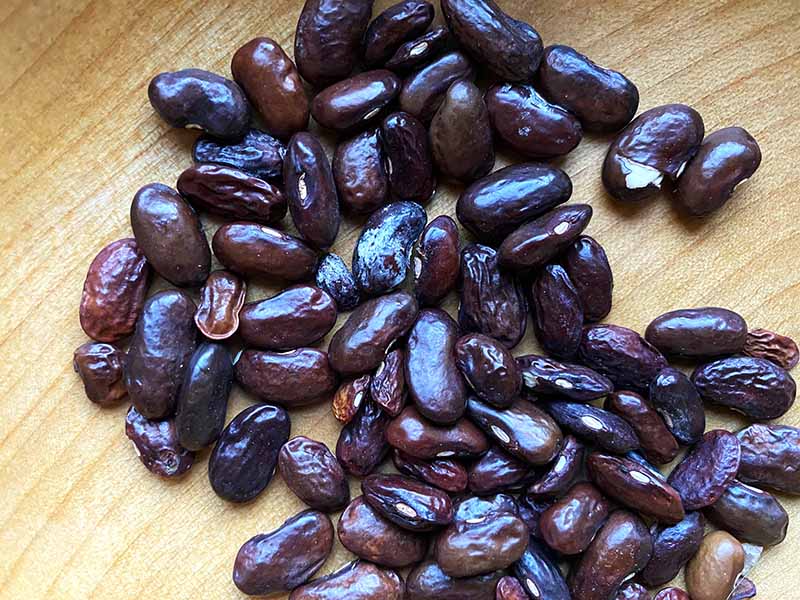
‘Grandma Nellie’s Yellow Mushroom’ seeds are a lovely lavender color when fresh, drying to a dark purplish brown.
The vines of ‘Grandma Nellie’s Yellow Mushroom’ reach eight feet tall and need an average of 56 days to reach maturity.
Not always an easy pole bean variety to find, seek out seed sellers specializing in rare heirlooms to add this fungi-flavored selection to your garden.
7. Ideal Market
For those gardeners who get sidetracked with life and can’t always make it to the trellis for harvesting on time, this next selection is a standout choice.
‘Ideal Market’ is a high-yielding, open-pollinated heirloom variety of P. vulgaris known for its green, stringless snaps.
Also known as ‘Black Creaseback’ and ‘Reuter’s Ideal Market,’ the delicious pods of this pole bean cultivar are picked at five to six inches long, and have an excellent, crisp texture, making them great for fresh eating or freezing.
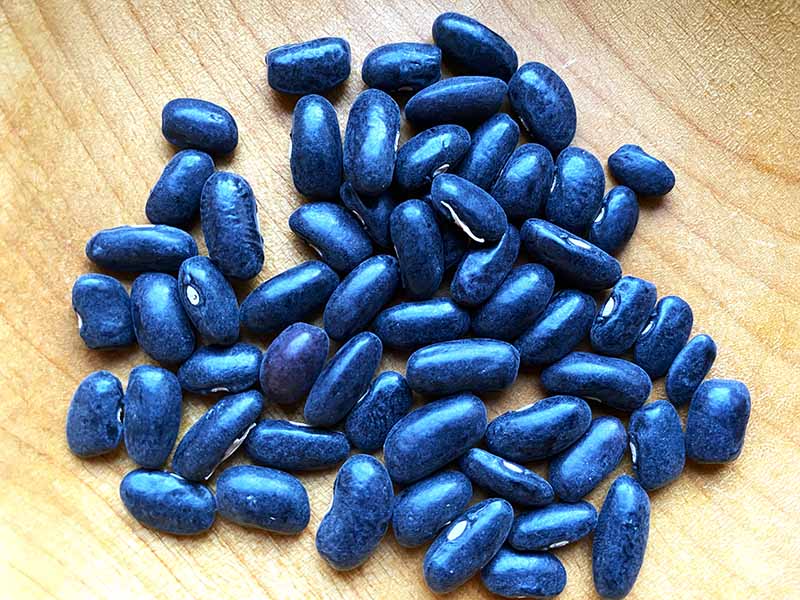
The flavorful pods of ‘Ideal Market’ contain small black seeds and keep well on their vines, which reach six feet tall.
Expect a harvest from ‘Ideal Market’ in 55 to 70 days.
Look for this variety from purveyors of rare, heirloom seeds.
8. Kentucky Wonder
A multi-use marvel, this next option is a survivor of heatwaves and plant pathogens.
‘Kentucky Wonder’ is a highly productive, open-pollinated heirloom variety from the 1800s that can be used for fresh eating, shelling, and drying.
This cultivar of P. vulgaris produces green pods that reach nine inches long and are curved, with an oval-shaped cross section.
These tasty pole bean pods are stringless at under five inches, have excellent flavor, and contain brown seeds.
‘Kentucky Wonder’ produces vines that reach five to seven feet long, and plants are resistant to bean common mosaic virus (race 1) and rust.
This heat-tolerant variety matures in around 63 days.
Tasty and disease resistant – yes, please! – ‘Kentucky Wonder’ is available for purchase in packs of 25 grams (or approximately 40 seeds) at Botanical Interests.
9. Monte Gusto
No one said veggies had to be boring, and our next selection is living proof.
With a name that means “mountain of taste,” ‘Monte Gusto’ is an open-pollinated variety of P. vulgaris that has tasty, yellow pods with purple veins.
The bright yellow pods of ‘Monte Gusto’ are easy to spot, should be picked at five to six inches long, and are sweet, flavorful, and crunchy, containing brown seeds.
The vines of ‘Monte Gusto’ reach six feet tall and are resistant to bean common mosaic virus (race 1).
Early for a yellow pole bean variety, this cultivar matures in 55 to 58 days.
Pile a mountain of taste into your harvest basket – look for ‘Monte Gusto’ in packets of 200 seeds at Burpee.
10. Orient Wonder
If your interest is piqued by unusual garden crops, you’ll want to consider this next selection.
‘Orient Wonder’ is an open-pollinated cultivar of Vigna sesquipedalis, the species commonly known as yard-long or asparagus bean.
Related to black-eyed peas and mungs, this pole bean variety is excellent for fresh eating.
The tasty pods of ‘Orient Wonder’ are pencil-thin, dark green, and super long – although they can reach 30 inches long, they should be picked at 12 to 18 inches for the best quality.
Delectable pods are smooth, tender, and stringless, containing small brown seeds.
The vines of ‘Orient Wonder’ produce purple flowers and vines that reach six to eight feet long.
If you’ve tried growing yard-longs before and failed, ‘Orient Wonder’ may be your ticket to success. While other varieties of yard-longs need warmer temperatures, ‘Orient Wonder’ can set fruit in cooler conditions.
‘Orient Wonder’ is a hardy variety, tolerating hot, cool, dry, and humid weather, and reaching maturity in approximately 80 days.
Ready to bring a bit of Eastern fascination to your veggie garden? You’ll find ‘Orient Wonder’ available for purchase in packets of 20 seeds at Botanical Interests.
Learn more about growing yard-long beans in our article. (coming soon!)
11. Qing Bain
Have a short growing season but you’re looking for big flavor? Feast your eyes on our next option.
‘Qing Bain’ is a Romano-type, open-pollinated heirloom cultivar of P. vulgaris that dates back to the 1800s.
The delicious, bright green pods of this variety are flat, and can be picked at up to 12 inches long and one inch wide.
‘Qing Bain’ is productive, producing flavorful, stringless, tender pods that are great for fresh eating or freezing. These contain white seeds.
The vigorous plants of this variety produce a harvest 50 to 55 days after sowing.
Have a hankering for this tender veggie? Purchase ‘Qing Bain’ seeds in packs of seven grams, four ounces, one pound, or five pounds at True Leaf Market.
12. Rattlesnake
If this next variety bites, you will be the smitten type of bitten.
This colorful variety of P. vulgaris is a sight to behold and can be enjoyed for fresh eating, shelling, or drying.
An open-pollinated heirloom cultivar, ‘Rattlesnake’ is known for its green pods mottled with attractive splashes of purple.
The pods are delicious, juicy, and tender, and should be picked at eight inches long or less. These turn solid green when cooked, and hold up beautifully for freezing.
The dry seeds of this variety have a rattlesnake-like coloration – light brown graced with dark brown patterns – and they’re great for storage as dried beans.
This pole bean cultivar was established in hot Southern weather and is tolerant of heat, humidity, and drought, but it doesn’t perform as well in Northern climates.
Producing pods in 65 days, ‘Rattlesnake’ vines reach 10 feet tall.
Ready to turn the tables and sink your teeth into these snakes? Get ‘Rattlesnake’ seed in an assortment of package sizes, from one ounce up to 40 pounds, at High Mowing Organic Seeds.
13. Scarlet Emperor
Every garden needs a star of the show – and this next option might be yours.
Often grown as an ornamental for its showy blooms, ‘Scarlet Emperor’ is a variety of P. coccineus, a legume commonly known as the runner bean.
Runners are known for their striking red flowers that attract friendly pollinators such as hummingbirds, bees, and butterflies.
This species can be planted a bit earlier than cultivars of P. vulgaris since runners don’t mind cooler weather.
‘Scarlet Emperor’ is a variety that produces sweet, slightly fuzzy, green pods, which can be used for fresh eating when picked at up to six inches long.
However, the pods of this cultivar can reach up to 12 inches long if allowed to mature, producing large seeds that can be used for shelling or dry storage.
The seeds are stunning – they are a mottled magenta and purplish blue when fresh, drying to a gorgeous black and purple.
Vines reach eight to 10 feet tall with orangish-red flowers, and they make an excellent living screen.
‘Scarlet Emperor’ produces fresh pods that are ready to pick in approximately 75 days.
Ready to let fly a wall of imperial red flowers? You’ll find ‘Scarlet Emperor’ seeds available for purchase in packets of 25 grams at Botanical Interests.
14. Snow on the Mountain
If there is snow on your nearby mountaintops during the cooler months, this next selection’s harvest will help you stay warm all winter long.
‘Snow on the Mountain’ is a lima bean cultivar with a pole growth habit.
Also known as “butter beans,” limas are scientifically classified as P. lunatus, making them cousins of P. vulgaris. Limas include both bush and pole bean cultivars, and ‘Snow on the Mountain’ is one of the climbers.
This open-pollinated heirloom variety dates back as least as far as the 1860s, and produces curved and slightly twisted green pods that are harvested for shelling or drying.
The pods of ‘Snow on the Mountain’ reach four to four and a half inches long and contain three or four sweet and nutty seeds.
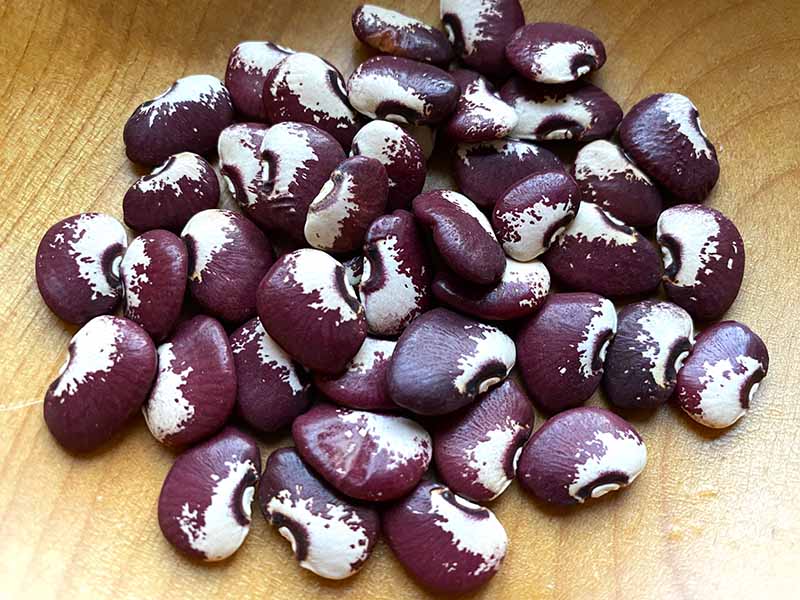
The tasty seeds of this variety are fairly small for limas, with a black eye surrounded by a snowy field of white on a dark maroon background – and they are excellent for dry storage.
Expect plants of this variety to grow to at least six feet tall, and to produce a harvest in roughly 80 days.
A rare cultivar, look for ‘Snow on the Mountain’ from heirloom seed sellers.
And if adding more limas to your garden patch sounds like a brilliant idea, you can discover more lima bean varieties in our article.
15. Yellow Bai Bu Lao
Finally, our last selection offers just one more fantastic option in a collection of colorful cultivars.
‘Yellow Bai Bu Lao’ is an open-pollinated heirloom pole bean variety of P. vulgaris from China that produces flavorful, pale green pods which lighten to whitish-yellow as they mature.
The romano-style pods are flat with wavy edges. They contain white seeds, and reach a half an inch wide and 10 to 12 inches long.
The delicious pods of ‘Yellow Bai Bu Lao’ are tender, growing large without developing strings or becoming fibrous. They are borne on five- to eight-foot-tall vines.
‘Yellow Bai Bu Lao’ is hardy, tolerant of cool weather, and reaches maturity in 55 to 60 days.
Tempted by these pale and tender beauties? You’ll find ‘Yellow Bai Bu Lao’ seeds available for purchase in packs of 20 grams, four ounces, one pound, or five pounds at True Leaf Market.
The Talk of the Beanstalk
We’ve encountered a lot of pole bean options – green, yellow, purple, and mottled varieties, cultivars that produce a harvest in just 50 days, and others that need a more leisurely 80 days.
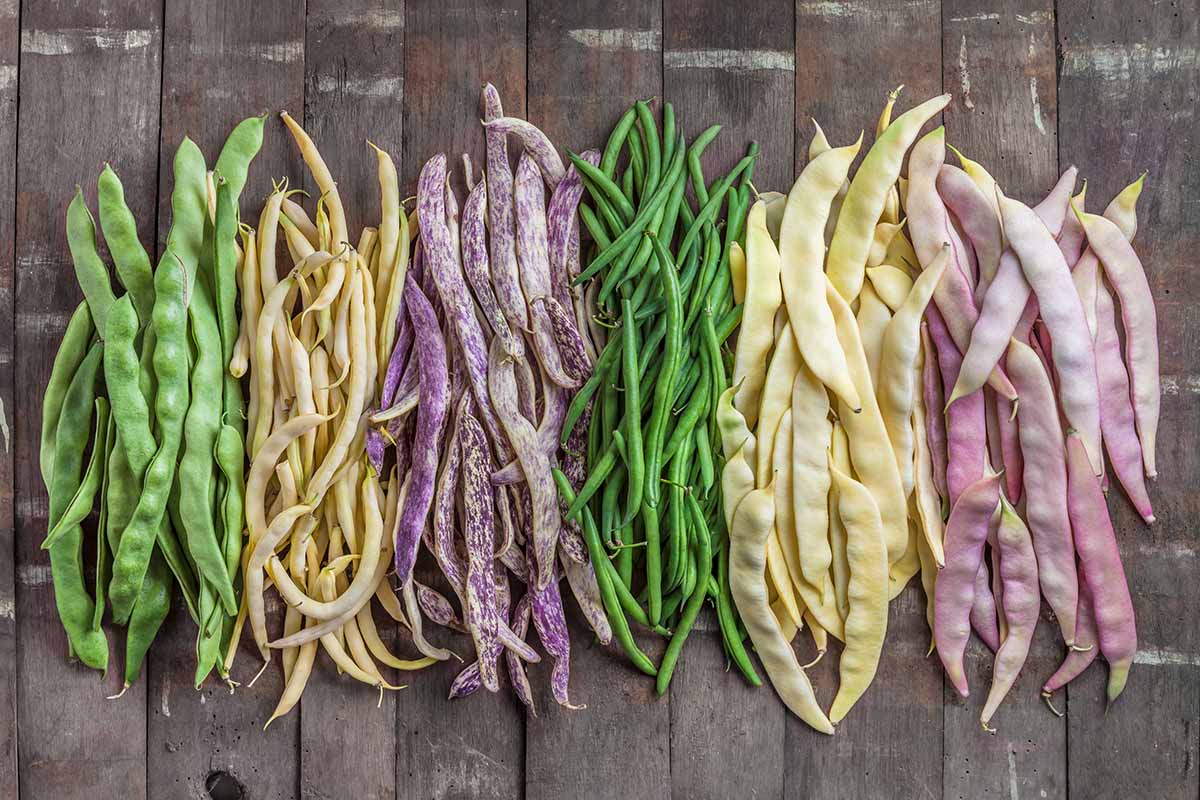
There are pencil-thin, stringless types, and others that have big, wide pods.
You also have a choice of flavors that are nutty, meaty, or mushroomy.
And of course there’s the cultural heritage that some of these heirloom pole bean varieties bring with them – some with strong Southern or Midwestern roots, others with Asian origins.
The thing to keep in mind is that a wise choice of pole bean variety is one with an appealing color, flavor, and texture combo that is also a perfect match for the length of your growing season.
Choose well and your bumper crop might attract fans from near and far – maybe even a friendly giant or two. (Psst – plant extra seeds, just in case!)
Are any of these pole bean varieties already among your favorites? Are there any other pole cultivars that hold a special place in your heart?
We especially love stories of varieties passed down throughout the ages, so feel free to tell us your heirloom cultivar stories here – share your thoughts in the comments section below.
After exploring these 15 options, do you still have beans on the brain? If you’d like to keep learning more about how to grow legumes for your dinner plate, we have even more fodder for your homegrown food fascination right here:
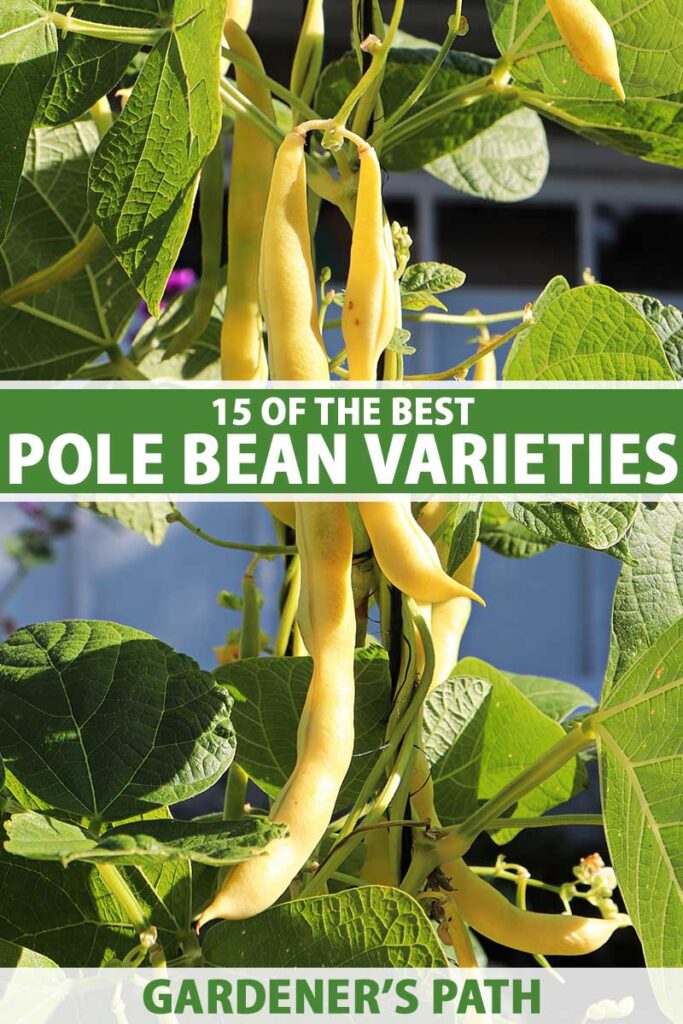
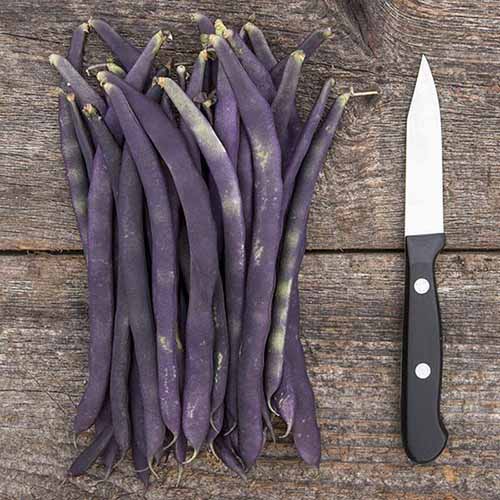
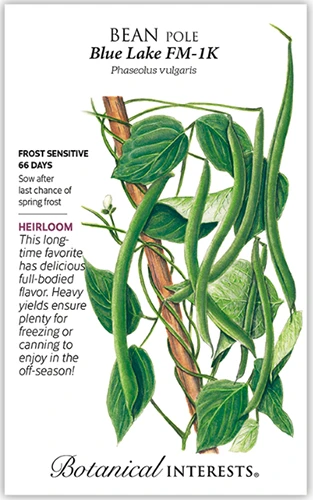
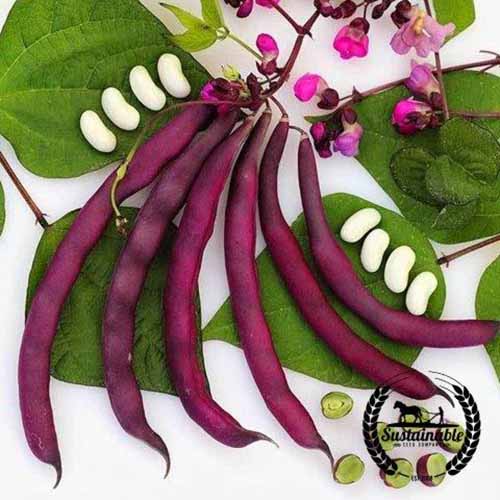
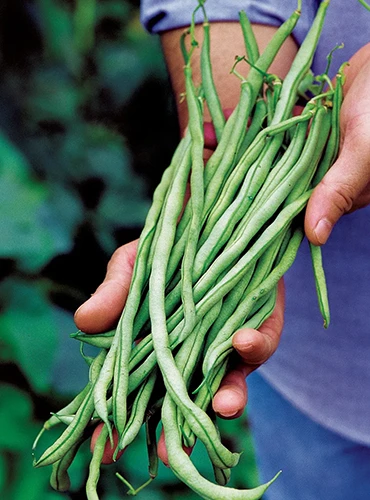
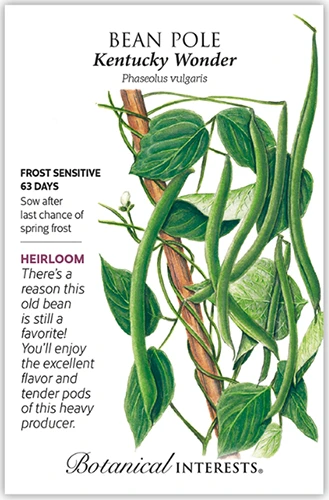
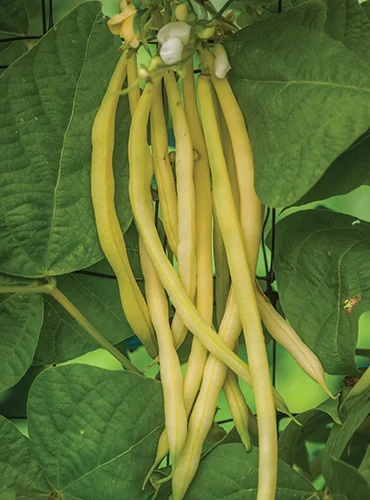
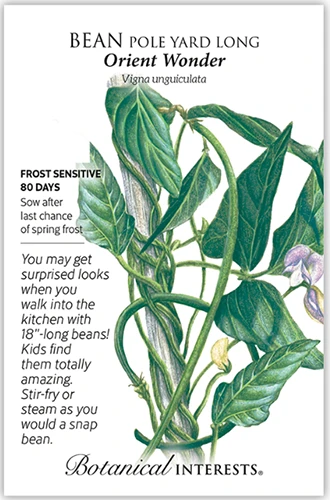
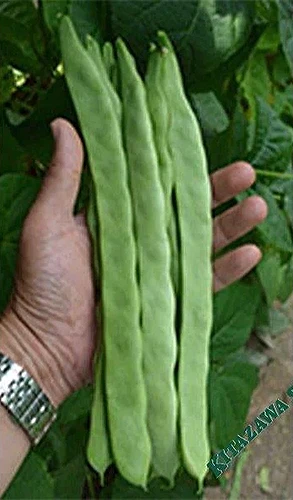

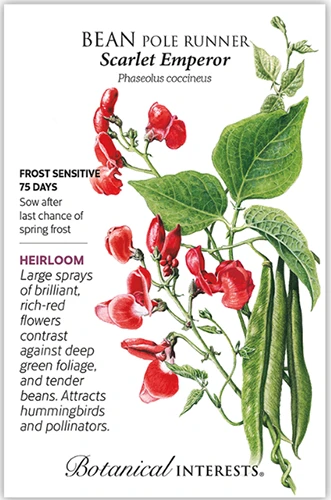
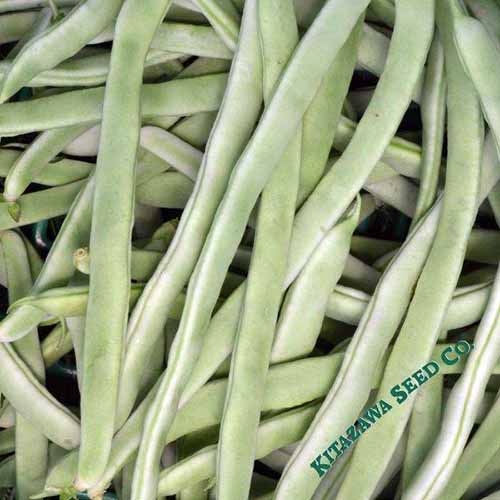

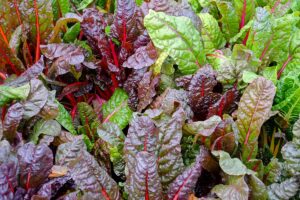
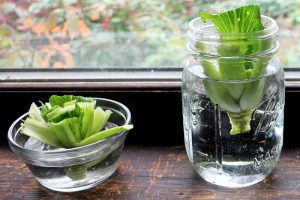
Great article. But you forgot King of the Garden pole Lima. If you have warm weather this lima bean will grow for several years. We had some in San Diego up to the top of a plum tree and kept yielding and yielding and yielding. I also love a Romano pole bean with round mottled seeds unlike the seeds you described in your roma beans. Here in San Francisco they take the cool weather and yield for a very long time with delicious snap beans or let them dry for soup beans either way you can’t beat it. As far… Read more »
Hi Lance, Thanks for your kind words on this article! It’s great to hear about your experience with ‘King of the Garden’ in San Diego. That variety is included in our article on some of our favorite lima bean varieties. I’m sure our readers will be delighted to learn about your experience growing it in a mild climate. ‘Pink Eye Purple Hull’ is one of my favorites too, and I included it in an article about some of the best dry and shelling beans, in case any of our readers would like to learn more about it. Thanks for taking… Read more »